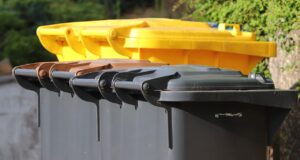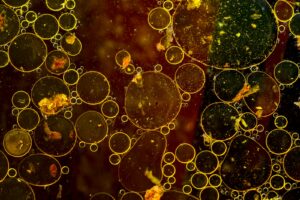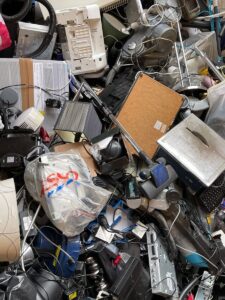What’s the ‘pig idea’ of cutting food waste?
The campaigning group Feedback has been working hard to combat food waste all over
the globe. The group has several campaigns at the moment, including The Pig Idea,
which encourages the use of food waste to feed pigs. As part of the campaign, the group is aiming to lift the EU ban on feeding catering waste, or swill, to pigs.
Environment Journal spoke to Feedback’s head of communications, Jessica Sinclair Taylor about this campaign and the group’s work.
 How does the amount of food wasted in the UK compare with other countries?
How does the amount of food wasted in the UK compare with other countries?
The UK is in an interesting position. While we are the worst offender in the EU in terms of how much food we waste, we’re also regarded as at the leading edge of tackling food waste. Between 2007 and 2015 household food waste reduced by 12% – but what we’re less clear on is how well industry is doing at tackling their waste. That’s because there are only a very few big food businesses, like Tesco, who provide public figures for how much they waste, including in their supply chain. And the UK is also lacking a national commitment to halving food waste by 2030, in line with the UN’s Global Goal. All in all – there’s a lot to be done.
Who or what are the biggest culprits for food waste in this country?
Figures show that the majority of food waste produced in the UK arises after food leaves the farm, most of which could be avoided. But where waste does occur on farms, or in production, much of it is the doing of food retailers insisting on strict cosmetic specifications for fresh produce, or using capricious ordering practices that leave farmers without a market for their fruit or veg.
A vast amount of food waste is also created at the household level and although responsibility certainly lies with us all as individuals to reduce household food waste, a portion of the blame needs to be placed on the supermarkets who encourage consumers to buy more than they need through promotions, inadequate storage information and overly cautious best-before dates. Greater transparency would help here as well.
Is food waste a supply chain issue, or is it a case that we as a nation throw too much away
It’s both – and you can’t separate one from the other. Overall, 95% of us buy our food in supermarkets, so the way big retailers market and sell food is hugely influential on what we buy, and what we waste. At a very basic level, when as a customer you have a sense of endless abundance – think of the huge piles of fruit and veg near the entrance to big supermarkets – there’s little incentive on you, other than cost, to husband food carefully. One problem is that household food waste tends to be the most visible, whereas waste caused by policies like specifications for how fresh produce looks and what size it is, isn’t visible to the vast majority of us. Our gleaning network takes volunteers out into farms to help farmers rescue crops that would otherwise go to waste, and get the food to a good cause. That’s one way of really seeing and feeling the reality of food waste on a big scale.
Could anaerobic digestion or renewable energy help prevent more food going to landfill?
Essentially, the best way for food to be used is as it was first intended when it was grown or manufactured. If food was produced for human consumption, then people should eat it. If that isn’t possible, the next most efficient use is for animal feed. Anaerobic digestion is the third best option – it’s better than sending food to landfill, but it isn’t an efficient use of the energy, water and fertiliser that went into producing food in the first place. So that’s why we really only support anaerobic digestion on a large scale for food that is unfit for humans or animals – and we’ve only begun to explore the potential for using food waste in animal feed. Our campaign, the Pig Idea, calls for more food waste to be transformed into feed for pigs (and their fellow omnivores chickens) to reduce the reliance on costly and environmentally damaging feed grown overseas. There are estimates that using food waste to feed pigs could save 1.8 million hectares of global agricultural land – a lot of it in South America’s endangered forests.
How can local authorities help to reduce the amount of food being wasted?
Local authorities need to take responsibility for facilitating the segregation of food waste from general waste at the household level and preventing as much food as possible from ending up in landfill. Although implemented throughout all local districts in Wales, only 27% of UK local authorities collect food waste in a separate caddy from general waste. Food waste collection, along with information on how to dispose of food waste efficiently, needs to be implemented throughout the UK to encourage food waste recycling by making it as easy as possible for UK households.
Are more regular rubbish collections the answer?
We’re wary of technical fixes like more regular rubbish collections. What really needs to happen, at household level, is an attitude shift towards food. We need to start regarding food as the precious commodity it is, and work at eating what we buy and buying what we’ll eat. The most important step in tackling food waste is prevention firs, then tweaking how we make use of what is unavoidably wasted.
How important is it that we move to a more circular economy with less wastage generally?
Given that food production is the single biggest impact we as humans have on our planet, moving towards a smaller, more circular and less wasteful food system is very important, and very urgent. The global food system is dangerously unsustainable: agriculture is the single biggest cause of biodiversity loss, and it’s responsible for 70% of deforestation, 70% of fresh water use, and 30% of greenhouse gas emissions. Our food system is broken, and to fix it we need to find ways to reduce the resources going into producing food (by reusing waste to feed soils, or animals), and waste less of what comes out. We’ve developed a model for a better food system you can see here.
What will it mean to the environment that we waste less?
If food waste were a country, it would be the third biggest emitter of CO2 on the planet, after the US and China. Contrary to the idea we need to increase food production to feed a growing global population, wasting less food would in fact allow a reduction in food production. More food for people, less waste, less climate change. Campaigning on food waste is essentially campaigning on climate change. In terms of what we are doing, anyone can get involved in our gleaning network, urban harvesting in London, find out more about our Pig Idea campaign, or even hold their own event to raise awareness. The great thing about food waste is that the solutions are delicious!















